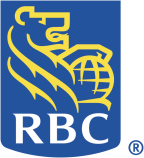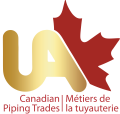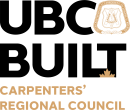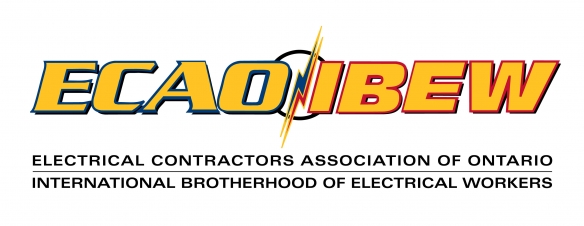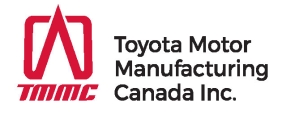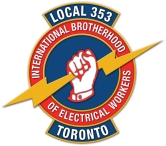Harassment Policy
Accident Investigation Report in PDF Format
Policy
At Skills Ontario we are committed to providing a safe and respectful work environment for all staff, volunteers, competitors and participants (individual). Management of Skills Ontario is committed to providing an environment in which all individuals are treated with respect and dignity.
Workplace violence, harassment and bullying will not be tolerated from any person in the course of conducting Skills Ontario business. Everyone participating in Skills Ontario business must be dedicated to preventing workplace violence, harassment and bullying.
All individuals are required to act in good faith and must work in compliance with this Policy and the supporting program, free from fear of reprisal. All individuals are encouraged to raise any concerns about workplace violence, harassment, sexual harassment and bullying and to report any incidents or threats they may be subject to and/or witness. Our pro-active approach to prevention enhances the Health and Safety of all persons of Skills Ontario.
Management pledges to investigate and deal with all concerns, complaints, or incidents of workplace violence, harassment and bullying in a fair and proficient manner while respecting the privacy of all concerned as much as possible.
The Ontario Human Rights Act provides protection from harassment that is related to race, national or ethnic origin, colour, religion, age, sex, marital status, family status, disability, pardoned conviction or sexual orientation. This internal Policy is not intended to prevent or discourage an individual from filing an application with the Human Rights Tribunal on a matter related to Ontario’s Human Rights Code within one year of the last alleged incident. We further acknowledge that an individual also retains the right to exercise any other legal avenues that may be available.
Purpose
This procedure was developed as a guideline to assess the risk of workplace violence, harassment or bullying which may arise due to the nature of the workplace, the type of work or the conditions of the work. Individuals shall be provided information and instruction regarding the reporting and investigation of incidents of violence or harassment and implementation of appropriate control methods to protect the health and safety of all persons in the workplace. All precautions reasonable in the circumstance for the protection of an individual must be adhered to and implemented effectively.
Particular attention should be paid to the following:
- General Surveys.
- Workplace Risk Assessment/Control Methods and Measures.
- Reporting, Investigation of incidents and follow up Methods.
- Right to refuse work where an individual believes the workplace is likely to endanger him/herself.
- Measures to summon immediate assistance in situations where violence has or is likely to occur.
Scope
This Policy shall be applied to all persons at Skills Ontario including: staff, volunteers, competitors and participants. Any occurrence of or perceived occurrence of workplace violence / domestic violence / harassment / sexual harassment shall be administered in accordance with the provisions of this procedure and its related documents / programs.
Responsibility
The CEO and the Director of Operations are responsible for:
- Ensuring that appropriate assessments / controls / procedures and work instructions have been developed, communicated and implemented accordingly to ensure the protection of all workers in the workplace.
- Ensuring that this procedure is maintained and reviewed as required, and that the applicable workplace parties are adequately trained.
- Ensuring that appropriate persons and resources are available for adequate implementation / administration and adherence to this program and its related documents.
- Reviewing and discussing incident and / or trends at Management Meetings and ensuring to apply lessons learned / control methods to other areas / jobs / tasks as appropriate.
Managers/Supervisors are responsible for:
- Ensuring that this prsocedure is maintained and reviewed as required, and that the applicable workplace parties are trained accordingly.
- Following the guidelines contained within this procedure and its related documents.
- Ensuring that all individuals are provided with instruction and training related to the specific hazards / controls related to their particular position / work location and / or duties.
- Immediately documenting and investigating any incident of workplace violence / domestic violence / harassment and sexual harassment reported to them. Notification to the CEO shall be administered following investigation of any concern brought forward. Such investigation shall be maintained strictly confidential.
- Ensuring appropriate adherence with section 43 of the Occupational Health and Safety Act whereby an individual refuses work they believe is unsafe.
- Ensuring they take every precaution reasonable in the circumstance for the protection of an individual
The Joint Health and Safety Committee (JHSC) is responsible for:
- In conjunction with Management, as requested, participating in the investigation process of incidents of workplace violence or harassment.
- Participating in and reviewing the results of Employee Surveys and Workplace Risk Assessment and controls. Where required, recommending the inclusion of additional control methods / processes, where required.
- Participating in any inspection of the workplace / work task as requested by the Supervisor, Employer or worker.
- Being present at any investigation or testing conducted by a Ministry of Labor Inspector
Employees and volunteers are responsible for:
- Notifying their Supervisor, and / or the CEO; if the offender is the Supervisor of the worker, of any incident of workplace violence or harassment encountered during their scheduled hours and /or that the individual believes to be caused from the work they perform.
- Immediately notifying their Supervisor/Main Contact of any accident / incident / near miss that they witness.
- Participating in the investigation process as required, including the completion of either the Employee Report or the Witness Report.
- Working in accordance with the policies and procedures of Skills Ontario.
Definitions
Workplace Violence is defined by Occupational Health and Safety Act as; the exercise of physical force by a person against a worker, in a workplace, that causes or could cause physical injury to the worker. An attempt to exercise physical force against a worker, in a workplace, which could cause physical injury to the worker or; a statement or behavior that it is reasonable for a worker to interpret as a threat to exercise physical force against the worker, in a workplace, that could cause physical injury to the worker.
Sexual Harassment: for the purpose of the Health and Safety program, this is defined as engaging in a course of vexatious comment or conduct against a worker in a workplace because of sex, sexual orientation, gender identity, or gender expression, where the course of comment or conduct is known, or ought reasonably to be known, to be unwelcome, or;
Making a sexual solicitation or advance where the person making the solicitation or advance is in a position to confer, grant, or deny a benefit or advancement to the worker and the person knows, or ought reasonably to know, that the solicitation or advance is unwelcome.
Domestic Violence for the purpose of the Health and Safety program, this is understood as a pattern of behavior used by one person to gain power and control over another person with whom he / she has or has had an intimate relationship. This pattern of behavior may include; physical violence, sexual, emotional and psychological intimidation, verbal abuse, stalking, and using electronic devices to harass and control. In accordance with the Occupational Health and Safety Act, Domestic violence is interpreted in a manner consistent with workplace violence definition when it may occur in the workplace.
Workplace Harassment is defined by Occupational Health and Safety Act as; engaging in a course of vexatious comment or conduct against a worker in a workplace that is known or ought reasonably to be known to be unwelcome. This definition is broad enough to include harassment prohibited under the Ontario Human Rights Code, as well as “psychological harassment” or “personal harassment”.
Some examples of harassment include:
- Unwelcome remarks, slurs, jokes, taunts, or suggestions about a person’s body, clothing, race, national or ethnic origin, colour, religion, age, sex, marital status, family status, physical or mental disability, sexual orientation, pardoned conviction, or other personal characteristics.
- Unwelcome sexual remarks, invitations, or requests (including persistent, unwanted contact after the end of a sexual relationship).
- Displays of sexually explicit, sexist, racist, or other offensive or derogatory material.
- Written or verbal abuse or threats.
- Practical jokes that embarrass or insult someone.
- Leering (suggestive staring) or other offensive gestures.
- Unwelcome physical contact, such as patting, touching pinching, hitting.
- Patronizing or condescending behaviour.
- Humiliating an employee in front of co-workers.
- Abuse of authority that undermines someone’s performance or threatens his or her career.
- Vandalism of personal property.
- Physical or sexual assault.
Bullying is usually seen as acts or verbal comments that could 'mentally' hurt or isolate a person in the workplace. Sometimes, bullying can involve negative physical contact as well. Bullying usually involves repeated incidents or a pattern of behaviour that is intended to intimidate, offend, degrade or humiliate a particular person or group of people. It has also been described as the assertion of power through aggression.
Workplace is defined by Occupational Health and Safety Act as; any land, premises, location or thing, at, upon, in or near which a worker works. As such, workplaces are more than simply offices, constructions sites, stores and industrial establishments.
I.R.S for the purpose of the Health and Safety program, this is understood as the Internal Responsibility System (IRS); which is a system in an organization that ensures that everyone in the workplace, from the Executive Director to the Supervisor to the workers, has a responsibility for workplace Health and Safety that is appropriate to their role and authority within the organization. The IRS is supported by a partnership between everyone in the workplace.
Critical Injury (O.Reg. 834.1, a-g) An injury of a serious nature that,
- places life in jeopardy;
- produces unconsciousness;
- results in substantial loss of blood;
- involves the fracture or a leg or arm, but not a finger or toe;
- involves the amputation of a leg, arm, hand or foot, but not a finger or toe;
- consists of burns to a major portion of the body; or
- causes the loss of sight in an eye.
Procedures
Employee Survey:
- At minimum, once annually, all personnel employed at Skills Ontario shall participate in and report factual responses to ensure appropriate assessments of the workplace are conducted and adequate control methods are implemented for the protection of all workers. Such information shall be recorded on the “Employee Survey”.
- Results of the survey shall be assessed and utilized by Skills Ontario for the purpose of the Workplace Risk Assessment, to identify specific risks related to the persons or tasks they perform. Such results will be assessed to determine effectiveness of the current control methods and / or addition of additional / modified control methods / measures.
- The above survey will be utilized to determine the general awareness and competency level of the workforce’s understanding of the process for reporting / investigating and working in compliance with Skills Ontario’s Workplace Violence and Harassment program.
- Changes to the workplace design / work location or duties of a worker shall result in the completion of an additional Employee Survey to determine a workers actual or perceived risk of workplace violence / harassment. Such results will be utilized for the purpose of the Workplace Risk Assessment.
Workplace Risk Assessment:
- At minimum, once annually, Skills Ontario shall conduct a workplace risk assessment, focusing on overall internal and external workplace specific risks, position / work location risks and activities performed by all persons (ie: break periods).
- All actions / tasks / roles shall be assessed to determine current risks and current control methods and / or recommended control methods shall be identified on the Workplace Risk Assessment. In the event that additional control methods / measures are required, an action plan shall be developed; detailing what is required, by whom and timeline for completion.
- Training of affected personnel is required for circumstances in which a modification or removal of any current control is made and or the addition of enhanced control methods. Personnel must be fully knowledgeable in the all risk controls related to their workplace / work location / tasks. Such instruction must be documented and maintained in the worker’s personnel file
- Changes to work location / design or tasks / activities performed by a worker shall result in the Workplace Risk Assessment being reassessed, related to the specific function / change. As such; the control methods in place shall be assessed to ensure appropriate protection for the health and safety of the affected workers.
- The above assessment shall be utilized to determine if current policies / procedures address all associated risks. In the event that a risk or perceived risk exists to which current procedures / work instructions do not address, Management, shall develop in consultation with the applicable Supervisor; additional procedures / work instruction to address and control the recognized risk. All affected personnel shall be adequately trained on any revision or development of an additional procedure / work instruction related to their specific position / task or activity. Such training / instruction shall be documented and maintained in the worker’s personnel file.
Reporting / Investigation and Follow up of Incidents of Violence or Harassment:
- All incidents of workplace violence or harassment must be reported immediately, regardless of severity. Individuals should record all unwelcome or harassing behavior, dates, places and witnesses. Individuals are responsible to notify their Supervisor/Main Contact, and / or the CEO; if the offender is the Supervisor/Main Contact of the worker, of any incident of workplace violence or harassment encountered during their scheduled hours and /or that the individual believes to be caused from the work they perform. Skills Ontario will follow our Incident Reporting Policy and complete an investigation of any reported issue.
- All personnel are responsible to immediately notify their Supervisor of any incident / near miss that they witness.
- Supervisors in conjunction with the Joint Health and Safety Committee will investigate using Skills Ontario’s Incident Reporting processes. An investigation will include interviews with the complainant and any witnesses. All employees have a responsibility to cooperate in the investigation. All parties have the right to be accompanied by someone with whom they feel comfortable during any interviews or meetings.
- All investigations will involve:
- Getting all pertinent information from the complainant.
- Informing the alleged harasser of the details of the complaint, and getting their response.
- Interviewing any witnesses.
- Deciding whether, on a balance of probabilities, the alleged harassment did date place.
- Recommending appropriate remedies, penalties or other action.
- If the investigators determine the complaint has merit a report will be submitted in writing to both the Board President and the CEO, ideally within a week of completing the investigation. The Investigators will recommend appropriate remedies and potential other action. The President in conjunction with the CEO will decide what action to take, and will inform both parties of the decision, in writing, ideally within a week of the report being submitted.
- Remedies for a person who has been harassed include any of the following, depending on the nature and severity of the harassment:
- An oral or written apology from the harasser and Skills Ontario.
- Return of lost wages.
- A job or promotion that was denied.
- Compensation for any lost employment benefits, such as sick leave.
- A commitment that he or she will not be transferred or will have a transfer reversed, unless he or she chooses to move.
- Corrective action for harassers will include any of the following, depending on the nature and severity of the harassment:
- A written reprimand.
- A suspension, with or without pay.
- A transfer, if it is not reasonable for the people involved to continue working together.
- A demotion.
- A dismissal.
- Mandatory attendance at anti-violence/harassment sessions.
- If there is not enough evidence to support an allegation of violence or harassment, the investigators will not recommend any penalties or remedies.
- In the rare event that the complaint was made in bad faith, that is deliberately and maliciously filed knowing it had absolutely no basis, the complainant will be subject to the same penalties as those outlined above for the harasser. The person unjustly accused will have their reputation restored, and will be given the benefit of any necessary remedies that would be given in a case of violence or harassment.
- Anyone who retaliates in any way against a person who has been involved in a harassment complaint will be subject to the same penalties as a harasser.
- Skills Ontario will not disclose any information about a complaint except as necessary to investigate the complaint or to take disciplinary action, or as required by law. The organization encourages individuals and Managers to respect confidentiality in the same way.
- Incident reports shall be reviewed and utilized by Skills Ontario for the purpose of determining the level of risk / exposure to workers. Additionally, re-assessment of the control methods and adequacy of such controls will be reviewed to determine if additional or modified controls are required.
- All incident reports shall be maintained by Management for a period of no less than seven (7) years.
- Incidents of workplace violence or harassment will be recorded and tracked to determine repeated / root cause of the incident. Occurrences revealing a pattern or similarity will be further investigated by Skills Ontario to determine a root cause to the existence of the risk / lack of adequate control.
- As required, based upon the circumstance and severity of the incident, external agencies shall be notified of the occurrence as required (Workplace Safety Insurance Board / Police Department and / or Ministry of Labor, in accordance with sections 51 and 52 of the Occupational Health and Safety Act) and appropriate documentation of the incident will be provided as prescribed.
Refusal to Perform Work / Activities:
- In situations in which a worker refuses to perform work which they reasonably believe may endanger them, appropriate adherence with section 43 of the Occupational Health and Safety Act shall occur. In situations of work refusals, such circumstance shall be administered in accordance with Skills Ontario’s Work Refusal process.
- All workers have the right to refuse work which they believe may endanger him / herself. Such refusal shall be free of reprisal, threat and or intimidation.
Summoning Immediate Assistance / Instances of Workplace Violence:
- Individuals are able to summon immediate help in various ways:
- By calling or shouting for help.
- By dialing 911 from any phone (business or personal cell phones or landlines).
- By activating “Panic Buttons” while on campus locations.
- By contacting the on-site security/police while working at The Toronto Congress Centre during the SOC via personal radios.
- By calling security while working at certain on-campuses.
- All actions / tasks / roles shall be assessed to determine current risks and current control methods and / or recommended control methods shall be identified on the Workplace Risk Assessment. Such assessment will include the review of and / or development of position / task specific methods to summon immediate assistance in situations of workplace violence.
- It is the responsibility of Skills Ontario to assess / develop and implement appropriate processes to ensure individuals have been provided with the appropriate resources and training to expediently summon assistance from other personnel, for the protection of their health and safety. Refer to Workplace Risk Assessment and control methods identified to determine the applicable method for the circumstance to ensure immediate assistance can be summoned.
- Personnel must be fully knowledgeable in the risk controls and the process by which they summon assistance from other personnel, in relation to their workplace / work location / tasks.
- Changes to work location / design or tasks / activities performed by an individual shall result in the Workplace Risk Assessment being reassessed, related to the specific function / change. As such; the control methods in place, inclusive of the process by which a worker summons immediate assistance shall be assessed to ensure appropriate protection for the health and safety of the affected individual(s).
Persons with a History of Workplace Violence:
- In situations in which an individual has a history of violence, Skills Ontario shall review and assess the nature of the individual’s history, in relation to the risk or perceived risk of violence to other persons. Such review, may include, but not be limited to, the review of medical records in their possession, review of previous incident reports or disciplinary records to determine historical behavior and / or communication with the affected workers treating practitioner(s) to determine if it is safe / suitable for the individual to be actively attending work duties.
- In some circumstances, providing information to co-workers/indivisuals may include providing available information about a person in the workplace who has a history of violent behavior, if the individual(s) can be expected to encounter that person in the course of his or her work and the risk of workplace violence is likely to expose the individual(s) to physical injury. No more personal information shall be disclosed than is reasonably necessary to protect the individual from physical injury.
- In circumstances in which one individual’s right to privacy must be taken into consideration (applicable legislation; Youth Criminal Justice Act Canada, the Personal Information Protection and Electronic Documents Act, the Personal Health Information Protection Act and the Education Act), in addition to another individual’s right to be informed of the risks of workplace violence arising from an individual under the Occupational Health and Safety Act, Skills Ontario shall assess the circumstances and, as required, shall attain appropriate legal advice, prior to the release of such information. In such situations, Skills Ontario shall ensure the protection of affected individuals, while seeking advice related to the disclosure of such individual’s personal information.
Communication:
- This procedure and its’ requirements will be communicated to all individuals (as applicable) through a variety of methods, including but not limited to: employee orientation, safety talks; internal / external training; postings; meetings; and memos.
- Copies of such training and communication (i.e. meeting minutes, agendas) shall be maintained by Management for a period of two (2) years.
Evaluation / Continuous Improvement:
- This procedure will be evaluated at least annually to ensure that all legislative requirements are being met; as well as to determine where improvements can be made and to acknowledge success.
References
Occupational Health and Safety Act (OHSA)
Bill 168
Bill 132
Work Refusal Policy
Incident Reporting Policy
Revision Control
None.
Attachments
Accident Investigation Report
Accident Investigation Report
|
Injured Worker’s Last Name |
First Name |
Occupation |
|||||||||||||||||||
|
|
|
|
|||||||||||||||||||
|
Location where injury/accident occurred |
First Aid Provider |
||||||||||||||||||||
|
|
|
||||||||||||||||||||
|
Hospital or Clinic Attended for Medical Aid |
Treating Physician's Name |
||||||||||||||||||||
|
|
|
||||||||||||||||||||
|
Nature of Injury |
Project Location of Accident/Injury |
||||||||||||||||||||
|
|
|
||||||||||||||||||||
|
Person who transported employee |
|
||||||||||||||||||||
|
Will this be a lost time injury? |
No |
Yes |
Is the injury work-related? |
No |
Yes |
||||||||||||||||
|
Were any subcontractors involved? |
No |
Yes |
Was the MOL called[1]? |
No |
Yes |
||||||||||||||||
|
Injury Details |
|||||||||||||||||||||
|
Date and Hour of Injury |
Date and Hour Reported to Employer |
||||||||||||||||||||
|
Day |
Month |
Year |
Time |
Day |
Month |
Year |
Time |
||||||||||||||
|
|
|
|
|
a.m. p.m. |
|
|
|
|
a.m. p.m. |
||||||||||||
|
Date and Hour Last Worked |
Normal Working Hours |
||||||||||||||||||||
|
Day |
Month |
Year |
Time |
from |
to |
||||||||||||||||
|
|
|
|
a.m. p.m. |
|
a.m. p.m. |
|
a.m. p.m. |
||||||||||||||
|
Who was the injury reported to? |
|
||||||||||||||||||||
|
What caused the injury? Describe the injury, the body part involved and specify left or right side (use back of sheet if necessary). |
|||||||||||||||||||||
|
|
|||||||||||||||||||||
|
|
|||||||||||||||||||||
|
|
|||||||||||||||||||||
|
|
|||||||||||||||||||||
|
|
|||||||||||||||||||||
|
|
|||||||||||||||||||||
|
|
|||||||||||||||||||||
|
|
|||||||||||||||||||||
|
|
|||||||||||||||||||||
|
|
|||||||||||||||||||||
|
Describe the worker's activities at the time of the injury. Include details of: people, equipment, materials, environment or process involved (use back of sheet if necessary). |
|||||||||||||||||||||
|
|
|||||||||||||||||||||
|
|
|||||||||||||||||||||
|
|
|||||||||||||||||||||
|
|
|||||||||||||||||||||
|
|
|||||||||||||||||||||
|
|
|||||||||||||||||||||
|
|
|||||||||||||||||||||
|
|
|||||||||||||||||||||
|
|
|||||||||||||||||||||
|
Did anyone else witness the accident or know more about the injury? |
|||||||||||||||||||||
|
|
|||||||||||||||||||||
|
|
|||||||||||||||||||||
|
|
|||||||||||||||||||||
|
|
|||||||||||||||||||||
|
|
|||||||||||||||||||||
|
|
|||||||||||||||||||||
|
|
|||||||||||||||||||||
|
|
|||||||||||||||||||||
|
|
|||||||||||||||||||||
|
What recommendations would you make to management to ensure a like event does not occur in future? |
|||||||||||||||||||||
|
|
|||||||||||||||||||||
|
|
|||||||||||||||||||||
|
|
|||||||||||||||||||||
|
|
|||||||||||||||||||||
|
|
|||||||||||||||||||||
|
|
|||||||||||||||||||||
|
|
|||||||||||||||||||||
|
|
|||||||||||||||||||||
|
|
|||||||||||||||||||||
|
Photo/drawing attached |
No |
Yes |
Copy to Executive Director? |
No |
Yes |
||||||||||||||||
|
Copy to JHSC? |
No |
Yes |
Copy to Employee File? |
No |
Yes |
||||||||||||||||
Reasons to call the MOL: fatality, critical injuries (defined as an injury of a serious nature that: places life in jeopardy, produces unconsciousness, results in substantial loss of blood, involves the fracture of a leg or arm, involves the amputation of a leg, arm, hand or foot, consists of burns to a major portion of the body, causes the loss of sight in an eye), fire, explosion or hazardous material release.



